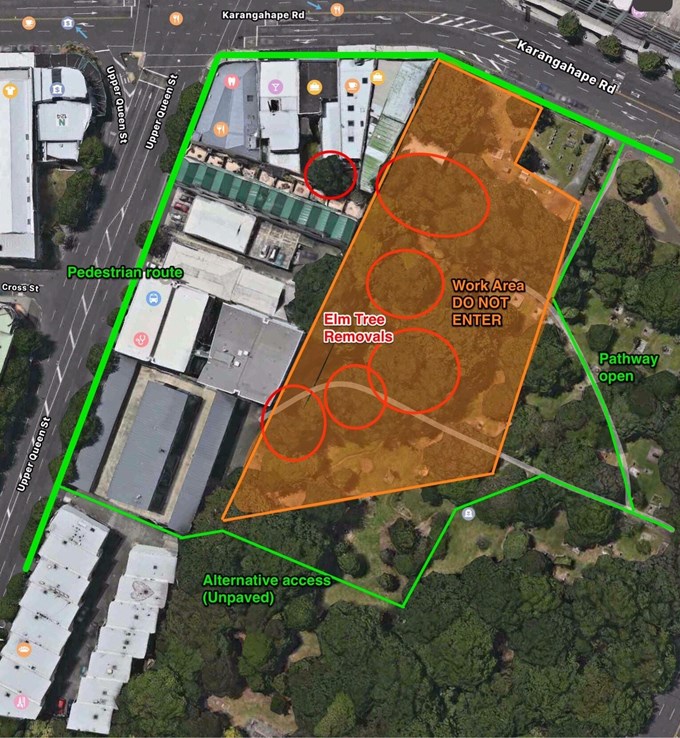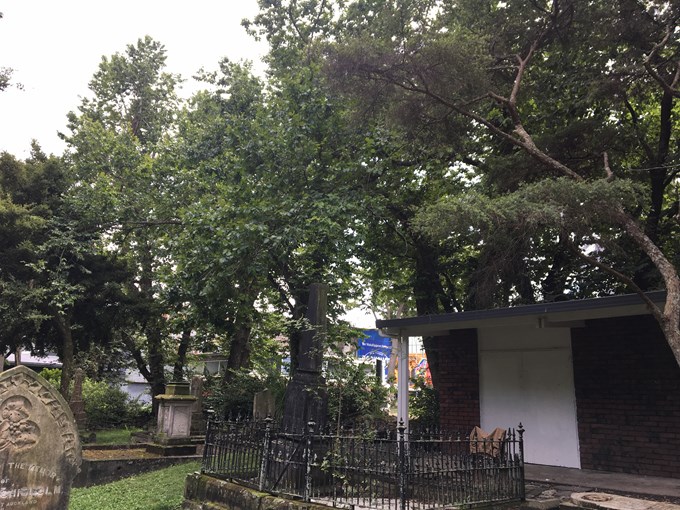The removal of several elm trees infected with Dutch elm disease in the Symonds Street Cemetery has started this week.
The presence of the disease was confirmed earlier this year, and a plan for removing the trees was developed.
Simon Cook, Arboriculture and Eco specialist at Auckland Council, says the project will be carried out in phases and is expected to be completed by late April.
“Our contractors have begun this week with the removal of the infected trees located in the west cemetery, near the Upper Queen Street entrance of the Presbyterian section, which will then be followed by the removals on the border of the Presbyterian and Hebrew sections," he says.
“The removal of some of the elm trees will depend on whether symptoms appear through the duration of the project.
"Particular care will be taken to minimise any disruption to this heritage-listed site.”
During this time there will be some access limitations to Symonds Street cemetery west, and alternative pathways are shown on signage at the entrances to the cemetery.
Please stay clear of the area where work is in progress (as detailed in the map below).

Please contact Auckland Council on 09 301 0101 or Treescape on 0800 873 396 if you have any questions about the project.
What is Dutch elm disease (DED)?
- It is caused by the fungus Ophiostoma novo-ulmi.
- The disease is commonly spread by the Scolytus multistriatus (elm bark beetle) carrying fungal spores from tree to tree but can also be spread through root grafting.
- DED is a destructive fungal disease and is almost always fatal once a tree is infected.
- It is critical that elm wood is not carried outside Auckland, especially as logs or firewood.
- Infected trees must always be removed to prevent the disease spreading further, and the wood must be mulched to prevent dying trees becoming a source of infection, or a hazard. In some areas, burning or burying elm material is an option.
- No storage of elm material is allowed.
How do I identify an infected tree?
- Elm trees are easily distinguished by their large leaves, which feature serrated edges, symmetrical veins, and an asymmetrical base.
- Watch for signs of wilting, curling, or yellowing leaves or dying or dead branches and trees.
- If you think you've found an infected tree, contain it and contact Auckland Council immediately on 09 301 0101. You should not move elm material in the greater Auckland area.


